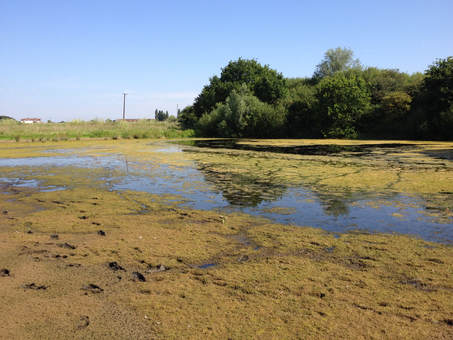What type of newt survey is right for your project?
"Great crested newt" are the three words that generally invoke the most fear in developers or contractors, often inciting a string of expletives!
The statutory legislation that protects this species has led to an established licensing regime that can cause delays and costly mitigation requirements. However, help is at hand, and if treated as a serious constraint and planned accordingly, then the presence of great crested newt need not be a show stopper or as costly for developers. In addition, a new licensing policy regime (in England) is resulting in a focus on ensuring that mitigation is aimed at habitat management and creation rather than on trying to preserve every last individual newt. Call me if you would like to discuss this in more detail!
Here at Huckle Ecology, we can provide a full range of great crested newt surveys. Contact us if you think you may need a GCN survey and we would be happy to discuss your project with you.
The statutory legislation that protects this species has led to an established licensing regime that can cause delays and costly mitigation requirements. However, help is at hand, and if treated as a serious constraint and planned accordingly, then the presence of great crested newt need not be a show stopper or as costly for developers. In addition, a new licensing policy regime (in England) is resulting in a focus on ensuring that mitigation is aimed at habitat management and creation rather than on trying to preserve every last individual newt. Call me if you would like to discuss this in more detail!
Here at Huckle Ecology, we can provide a full range of great crested newt surveys. Contact us if you think you may need a GCN survey and we would be happy to discuss your project with you.
Habitat Suitability Index AssessmentA HSI assessment involves surveying ponds for their suitability to support GCN.
Each pond is assessed against 10 criteria that have been shown to provide a good indication of whether gcn are present; the resulting scores are used to create a HSI score which categorises the pond habitat's suitability for great crested newts. Typically ponds within a range of up to 500m from a site may need to be assessed in this way and we normally include this in a Phase 1 Habitat Survey or Preliminary Ecological Appraisal undertaken to inform a planning application. HSI assessments are required as part of any subsequent European Protected Species Licence requirements and provide a useful scoping tool for determining the scope of further newt surveys that may be required. |
Environmental DNA Sampling

In recent years, eDNA techniques have emerged and provide an alternative method for determining the presence or absence of GCN in a pond or ponds.
Water samples are collected and analysed in a lab for the presence of DNA fragments from GCN. Such DNA is reliably present in ponds where GCN are present, from mid-April onwards and this method is particularly useful when trying to rule out ponds for further survey (see below).
Please get in touch to discuss if this method would be suitable for your site or if you would like us to sample some of your ponds.
A Natural England GCN Survey Licence is required for this water sampling.
Water samples are collected and analysed in a lab for the presence of DNA fragments from GCN. Such DNA is reliably present in ponds where GCN are present, from mid-April onwards and this method is particularly useful when trying to rule out ponds for further survey (see below).
Please get in touch to discuss if this method would be suitable for your site or if you would like us to sample some of your ponds.
A Natural England GCN Survey Licence is required for this water sampling.
Great crested newt presence/absence surveys & population class assessmentGCN surveys involve a total of 4 survey visits to establish presence or absence with at least 6 visits required where presence has been confirmed to determine a population class for each pond.
Each pond is surveyed using a combination of methods including egg-searching, nocturnal surveys using high-powered torches, aquatic funnel traps and in some cases netting. Surveys are required to be undertaken within a strict time window when GCN are most likely to be present in ponds. Surveys can be scheduled between mid-March and mid-June with at least 2 surveys between mid-April and mid-May. A Survey Licence granted by Natural England (or NRW in Wales and SNH in Scotland) is required to undertake these surveys. |

